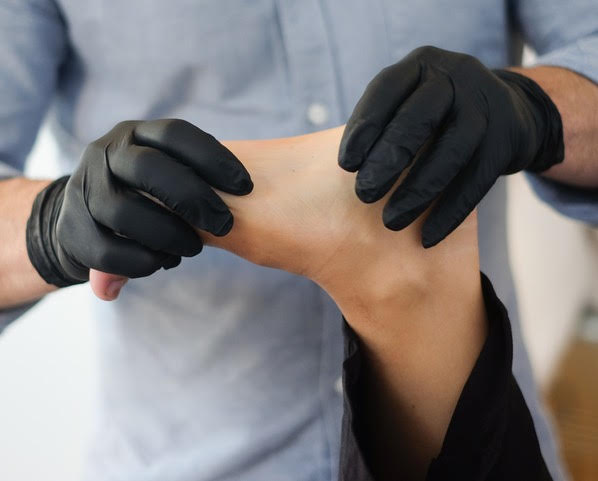Physical Therapy Vs. Physiotherapy: What’s the Difference?
When it comes to physical therapy, there’s a lot to consider in terms of forms of therapies and treatments. Most commonly, physical therapy is associated with sports medicine and might even conjure up images of trainers helping athletes like Tampa Bay Lightning players work through injuries with repeated exercises. However, you might also hear of physiotherapy. Are there differences between the two? Or are physical therapy and physiotherapy the same thing? For answers to these questions, we’re going to break it down below.
Physical Therapy and Physiotherapy
Spoiler alert: You might be surprised to learn that physical therapy and physiotherapy are basically the same thing. That’s right. Plot twist: Verbal Kint is Keyser Soze (Usual Suspects reference). Physical therapy is physiotherapy and vice versa. But why are they called two different things? Why aren’t they just called one thing? Does everything have to be confusing?
Basically, it’s a regional or location-based thing. So the same way people might drive on the right side of the road in Sarasota (god willing), and on the left side of the road in Stocking Pelham in the UK, people have different pronunciations for this form of therapy. For example, Australia, Canada, and Europe mostly refer to it as physiotherapy, while in the United States, it’s physical therapy. They are basically just two ways to describe the same thing.
However, some believe that there are differences between the two forms of therapies, even if they are roughly the same medical treatment. For example, physical therapy might be more associated with sports teams and private practice, whereas physiotherapy is often correlated with postoperative care, something treating injuries rather than preventing injuries. Again, they are both the same thing, but some people see them differently.
What Do Physical Therapists and Physiotherapists Do?
Like any medical professional, the main goal of any physical therapist or physiotherapist is to make patients feel better. Their duties include:
- Asking patients about their injuries and where they feel discomfort
- Coming up with a plan for treatment for the patient
- Helping patients with exercises and techniques to improve mobility and movement
- Helping patients stimulate and massage areas to ensure they’re on the path toward recovery
- Teaching patients how to utilize tools like wheelchairs and walkers in their recovery
- Monitoring progress toward achieving a recovery goal
- Maintaining records that track this progress
- Providing patients and their families with options for in-home treatments
Where Do Physical Therapists and Physiotherapists Work?
Physical therapists can work in hospitals, clinics, for sports teams, in nursing homes, home health centers, schools, research centers, sports and fitness centers, government groups, and rehabilitation centers.
However, unlike most medical professionals which may be on call at all hours of the day, including overnight shifts, physical therapists and physiotherapists generally work a 9-to-5 schedule.
What About Occupational Therapists?
As if the confusion between physical therapists and physiotherapists isn’t enough, let’s throw occupational therapists into the mix. These therapists do something different than physical therapists, because they work with patients on restoring more basic functions to help them on the road to recovery. For example, if a patient needs to relearn how to write or use their hands after suffering a stroke, this would be an example of something an occupational therapist would help with. It deals with more day-to-day functions that people need to relearn.
Common Physical Therapy Injuries
Maybe you stub your toe really hard after accidentally kicking the side of your bed and feel like you need to relearn how to walk over the course of a week. Chances are that’s not an injury worth physical therapy and your stubbed toe will feel better just over time, with the pain going away gradually.
However, some pain requires physical or physiotherapy, like:
- Lower back pain
- Shoulder injuries
- Sprained ankles
- Tennis elbow
- Hamstring strain
- Shin splints
- ACL tear
- Broken toes (as opposed to stubbed toes)
What Kind of Training Do Physical Therapists and Physiotherapists Undergo?
Like any kind of medical professional, there’s a lot of training and education involved. Physical therapists and physiotherapists study anatomy, exercise physiology, biomechanics, and more. They might receive a Bachelor of Science degree before going on to pursue a Doctor of Physical Therapy degree, which typically takes about three years to complete.
Contact Us
Now you hopefully understand the differences between physical therapy and physiotherapy (and if you’ve read this post, you’ll learn that there really is no difference other than the terms people prefer to use!). Whatever you call it, Love Health has expert physicians and a first-rate staff to support you with whatever medical services you need, supporting patients with individualized therapy to get you back on your feet, with sports medicine offices in North Tampa, St. Petersburg, South Sarasota, North Sarasota, and Brandon. And if you’re in Pennsylvania, we also have a clinic in Philadelphia.
To schedule an appointment, contact us at 1-800-511-8050 or get in touch via our contact link here.


